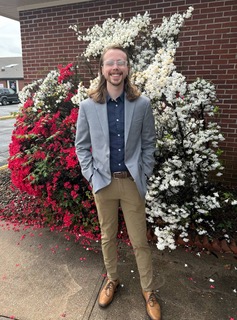
by Adele Duncan, student writer
Around 15 years ago, Harding University initiated swab drives as an on-campus service project for undergraduate students. While the term “swab drive" might evoke images of vehicle maintenance, these events are intended to recruit potential donors for the national bone marrow registry. Harding University provides an ideal setting with access to a population of generally healthy individuals who are willing to join the registry by simply swabbing the inside of their mouths and completing a brief information form. Over these 15 years, the University has become the leading source of donor matches for Earl Young’s team, which hosts these drives for DKMS, an international nonprofit bone marrow donor center based in Germany.
Jeanie Smith has worked with Earl Young's team for years as they have grown the swab drives on campus.
“I was one of the first faculty members hired in Harding’s College of Pharmacy,” Smith said. “We switched from the National Marrow Donor Program to DKMS because Earl Young is associated with our sister school Abilene Christian University.”
Kennedy Barden (’20) had a unique experience when he was contacted about the possibility of becoming a donor.
“When you swab, the statistical likelihood that you will ever be called to donate is so impossibly small that swabbing feels more like a formality than an inevitable reality.” he said.
Bardon swabbed on a normal day on campus and was later contacted twice by DKMS. The first time he was a match was in January 2020, but unfortunately there were some complications.
“The patient was physically unable to receive the infusion. There were too many complications from the COVID-19 pandemic,” Barden said. “I learned about that in March 2020.”
Almost exactly three years later, he was contacted again by the DKMS. In January 2023, the process began the same way — with the same email and same blood drawn, but this time the process continued. There was a physical assessment required to confirm he was healthy enough for the procedure followed by five rounds of injections of stem cell stimulants every day leading to donation day.
“On the day of donation, I spent roughly 7-8 hours hooked up to a blood draw and transfusion machine that pulled my blood, filtered out the stem cells needed for donation, and injected my blood back in.” Barden said. “All in all, the process was seamless and had minimal impact on my time or energy levels. The technicians and nurses I worked with were familiar with the process and helped me understand it better too.”
Barden says this experience has opened his eyes to a great need, and he is — now more than ever — a major advocate for giving time, energy and even one's own body for the sake of others.
While a list of all matched donors from Harding University cannot be disclosed due to HIPAA regulations, stories like Barden’s continue to inspire the community and motivate other students to participate in swab drives — ultimately leading to even more matches and lives saved.